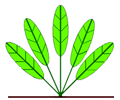


Blackmore River Caridina
Caridina sp. NT2
General information: What type of shrimp, good question? I sent some specimens to Dr Tim Page of Griffith University who compared their DNA to other Caridinas in his reference collection. Dr Page was kind enough to write this, Your C. sp. from Blackmore R., Darwin Area groups with a species I call C. sp. NT 2 unpublished sequence. The other C. sp. NT 2 that I have come from Howard Springs NT. They inhabit shallow water among aquatic vegetation and near leaf litter. The natural diet is unkown but it is probably the same as other small Caridina eating algae and other plant and animal material among the plants and leaf litter. The shrimps display more colour when they are feeling secure. The third photo is a shrimp in a white plastic bowl, all its colour has drained away.
Cultivation notes : They are best kept in a small aquarium about 60cm with plenty of cover for them to hide among. They have large eggs and can multiply in fresh water. In the ponds at Aquagreen they are cultured with water quality about 80ppm hardness, carbonate hardness 90ppm, pH 7.8 and with plankton fertilisation schedule with supplimentary small aquaculture feed pellets. The petshrimp web site suggests using weathered leaf litter as a source of nutrition. The shrimps will also take flake foods and have been observed gathered over a small piece of fish flesh. Be very careful with tap water and other chemicals, always prepare your make up water a week before you need it and keep it in a shady place in the garden where mother nature can add the final preparations to making it safe. The practise of doing a waterchange from the tap and adding chlorine remover as you go is not recommended.
Distribution : This shrimp has been found in the Howard River, Darwin River, Blackmore River and Moyle River.
Selling details : Sold as individuals at or larger than 12 mm, minimum order 5
Reference: Communication with Dr Tim Page, Griffith University, Qld. Page et al (2007), "Molecular Phylogenetics & Evolution 43:pp.645-659 "